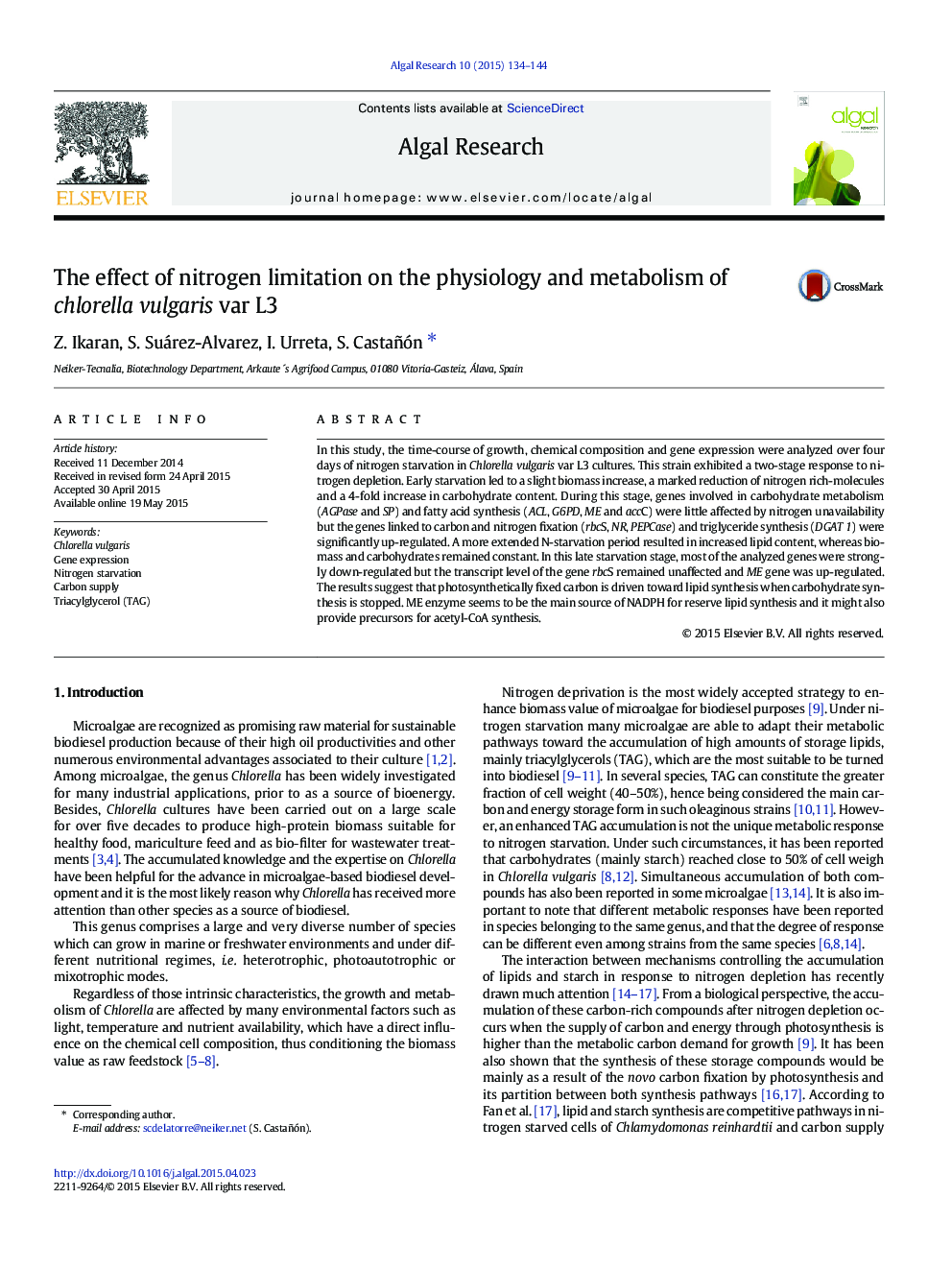| Article ID | Journal | Published Year | Pages | File Type |
|---|---|---|---|---|
| 1742016 | Algal Research | 2015 | 11 Pages |
•Gene expression and chemical analysis show a biphasic cell response to N-starvation.•Sequential accumulation of carbohydrates and TAG occurs after N-depletion.•Nitrogen assimilation related-genes were up-regulated after N-depletion.•TAG accumulation is accompanied by a major metabolic shutdown.•Malic enzyme might provide NADPH for reserve lipid synthesis.
In this study, the time-course of growth, chemical composition and gene expression were analyzed over four days of nitrogen starvation in Chlorella vulgaris var L3 cultures. This strain exhibited a two-stage response to nitrogen depletion. Early starvation led to a slight biomass increase, a marked reduction of nitrogen rich-molecules and a 4-fold increase in carbohydrate content. During this stage, genes involved in carbohydrate metabolism (AGPase and SP) and fatty acid synthesis (ACL, G6PD, ME and accC) were little affected by nitrogen unavailability but the genes linked to carbon and nitrogen fixation (rbcS, NR, PEPCase) and triglyceride synthesis (DGAT 1) were significantly up-regulated. A more extended N-starvation period resulted in increased lipid content, whereas biomass and carbohydrates remained constant. In this late starvation stage, most of the analyzed genes were strongly down-regulated but the transcript level of the gene rbcS remained unaffected and ME gene was up-regulated. The results suggest that photosynthetically fixed carbon is driven toward lipid synthesis when carbohydrate synthesis is stopped. ME enzyme seems to be the main source of NADPH for reserve lipid synthesis and it might also provide precursors for acetyl-CoA synthesis.
